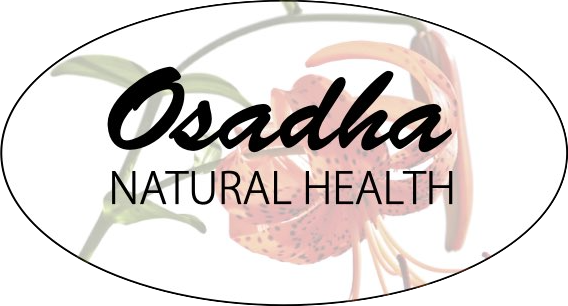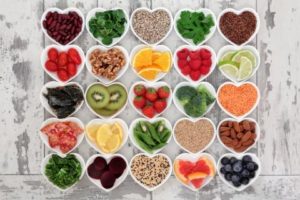When I started herb school, one of the teachers mentioned having a meltdown the day after eating a pint of ice cream. She knew it would happen, from experience, but really wanted the ice cream. I remember thinking “Really? Distraught on the bathroom floor just from eating ice cream?” Then the class did an elimination-provocation diet, and wow!
What is an elimination-provocation diet?
An elimination-provocation diet is a diet in which certain foods are avoided for several weeks and then added back one at a time to look for reactivity. And, boy, did I react after adding back two of my favorite foods at the same time (not recommended). I had dairy and pasta, in the form of fettuccini alfredo, on Saturday then again as leftovers on Sunday. On Monday, I crashed hard at my cafe…experiencing intense anger and sadness. I kept crying when customers weren’t looking. Admittedly, I’ve been dealing with chronic depression and anxiety forever. But this was something different. Around lunchtime the lightbulb turned on for me…could this be a reaction to what I ate over the weekend?
I went back off of dairy and pasta then tried again in a week. I had the same response.
I did it again in another week. Ditto.
Ten years later, I still react when eating either pasta (or bread) or dairy, either individually or together: most recently, after a friend made pasta and garlic bread for us. The next day I felt angry, frustrated, and defeated. I’ll get into what may be going on, physiologically speaking, in a future article on the gut-brain connection. For now, I’ll simply say that irritability, nervousness, and fatigue are common outcomes of food intolerances, and in my experience, the symptoms can be pretty intense.
What are food sensitivities?
Food sensitivities are not the same as food allergies. An allergy is an immune system-mediated response to a food that happens relatively quickly after eating even tiny amounts of the offending food—at times the reaction is instantaneous. Symptoms can range from stomach upset, diarrhea, or hives to life-threatening swelling of the airways and drop in blood pressure. A sensitivity or intolerance is often related to the inability of the digestive system to deal with a particular food. The immune system may be involved but in a different way than with an allergy. The response may not be noticeable until a couple days later or it can start shortly after eating a decent amount of the food.
In working with clients struggling with mood, diet is important. Are there lots of processed or otherwise inflammatory foods? Are they regularly eating foods to which they are sensitive? An elimination-provocation diet is a great way to see if aspects of their diet are contributing to unpleasant moods. It’s not that a change in diet is going to cause a miraculous turn around in mood for someone who is has been struggling for a long time, but it may make a noticeable difference. Other methods of testing for food sensitivities are fraught with problems and don’t directly look at the impact of a particular food on mood.
Why just give up one food at a time to find any problem items? Because reactivity to that food may be masked by sensitivities to other foods that are still in the diet. For example, someone may give up bread but be drinking beer and eating fried foods frequently. Because they still feel like crap off of the bread, they assume that bread isn’t a problem.
How can I try an elimination diet?
How does one do an elimination diet? There are a variety of them online. I like the ideas offered by Dr. Liz Lipski. The basic elimination diet outlined here is modified off one of hers. You eat the foods on the “allowed” list and eliminate the foods on the “not allowed” list. Then, after 2-5 weeks (I recommend at least 3), you add back one food at a time, eating a good amount of it, and take a few days to notice any unwanted reactions: digestive changes, fatigue, irritability, anger, sadness, anxiety, stuffiness, skin issues, etc. If you react poorly to a food, take it back out and don’t try eating it again for about 6 months—after your gut has had time to heal. (As with me and pasta/dairy, you may not be able to go back on certain foods even after years.) If you feel fine, then the food you just added back is likely not a problem. If you’re not quite sure, take the food out then try it again in another week or two.
A basic elimination-provocation diet could be as follows. Meals on this diet don’t have to be boring! Spice them up; add the allowed healthy fats and proteins. Buy a whole foods cookbook to give you ideas.
Foods Allowed on Elimination Diet
- Vegetables and fruits with the exception of oranges in their various forms. Consider skipping nightshades (tomato, eggplant, peppers, chiles, etc.).
- Poultry
- Fish other than shellfish
- If vegetarian, peas, lentils, and other legumes other than soy (for protein). If not vegetarian, skip these.
- Game
- Specifically these grains: rice, millet, quinoa, buckwheat
- Olive oil, coconut oil, avocado oil
- Liquids: water/sparkling water, non-caffeinated herbal teas, fresh juices to which the pulp has been added back
- Cooking herbs and spices: salt, pepper, cinnamon, ginger, oregano, thyme, turmeric, garlic, etc.
Foods Not Allowed on Elimination Diet
- Beef, pork, processed meats (sausage, cold cuts, bacon, etc.)
- Shellfish (e.g., shrimp, crab, lobster, clams, mussels, oysters, etc.)
- Dairy (e.g., butter, milk, cheese, ice cream, etc.).
- Eggs
- Specifically these grains: wheat, rye, barley, spelt, oats, corn…essentially all grains other than those listed in the “Allowed” category
- Soy (e.g., edamame, tempeh, miso, tofu, textured vegetable protein, most “fake meat” products, soy milk, soy isoflavone or protein isolates, etc.)
- Polyunsaturated oils (e.g., safflower, sunflower, soy, canola, cottonseed) or the foods that usually are made with them (commercial chips, popcorn, restaurant foods, etc.)
- Trans fats (i.e., partially hydrogenated or hydrogenated fats). These are often in baked goods, crackers, fried foods, and such.
- Fake butter spreads
- Nuts and seeds (other than coconut)
- Alcohol
- Coffee or other caffeinated beverages
- Chocolate
- Soda pop
- Sugar and products with added sugar, although blackstrap molasses is OK. Stevia is OK.
- Juice concentrates
- Sports drinks with artificial colors and flavors
- Commercial sauces and condiments (e.g., BBQ, teriyaki, ketchup, etc.)
- Anything you already know that you don’t respond well to
Hints & Tips for an Elimination Diet
- Don’t wait until starting the diet to suddenly stop caffeine…you’ll feel awful. If you’re a coffee drinker, take a couple of weeks ahead of time to slowly wean yourself to decaf so you don’t get slammed with the withdrawal symptoms. Try half caffeine for a week, quarter caffeine for a week, and then full decaf. Then start the elimination diet.
- Shop and prepare things ahead of time to make it easier to stick to the diet and not cheat by grabbing whatever you can to eat when hungry.
- Read labels…forms of some foods may be common ingredients in other foods (for instance, corn syrup, corn oil, corn starch, or textured vegetable protein).
- Organic foods are preferable. If financially problematic, maybe focus on animal proteins being organic as much as possible and use the Environmental Working Group’s “Clean 15” guide to produce that shouldn’t have high levels of herbicide/pesticide contamination.
- If normally very active, it may be good to limit intense activity during at least part of the diet to give the body a break.
- You may feel weird or off at first as your body takes a few days to adjust to what may be quite a new diet for you.
~~~
Content © Dr. Anna Marija Helt, Osadha Natural Health, LLC. Permission to republish any of the articles or videos in full or in part online or in print must be granted by the author in writing.
The articles and videos on this website for educational purposes only & have not been evaluated by the Food and Drug Administration. This information is not intended to diagnose, treat, cure, or prevent any disease or to substitute for advice from a licensed healthcare provider.

